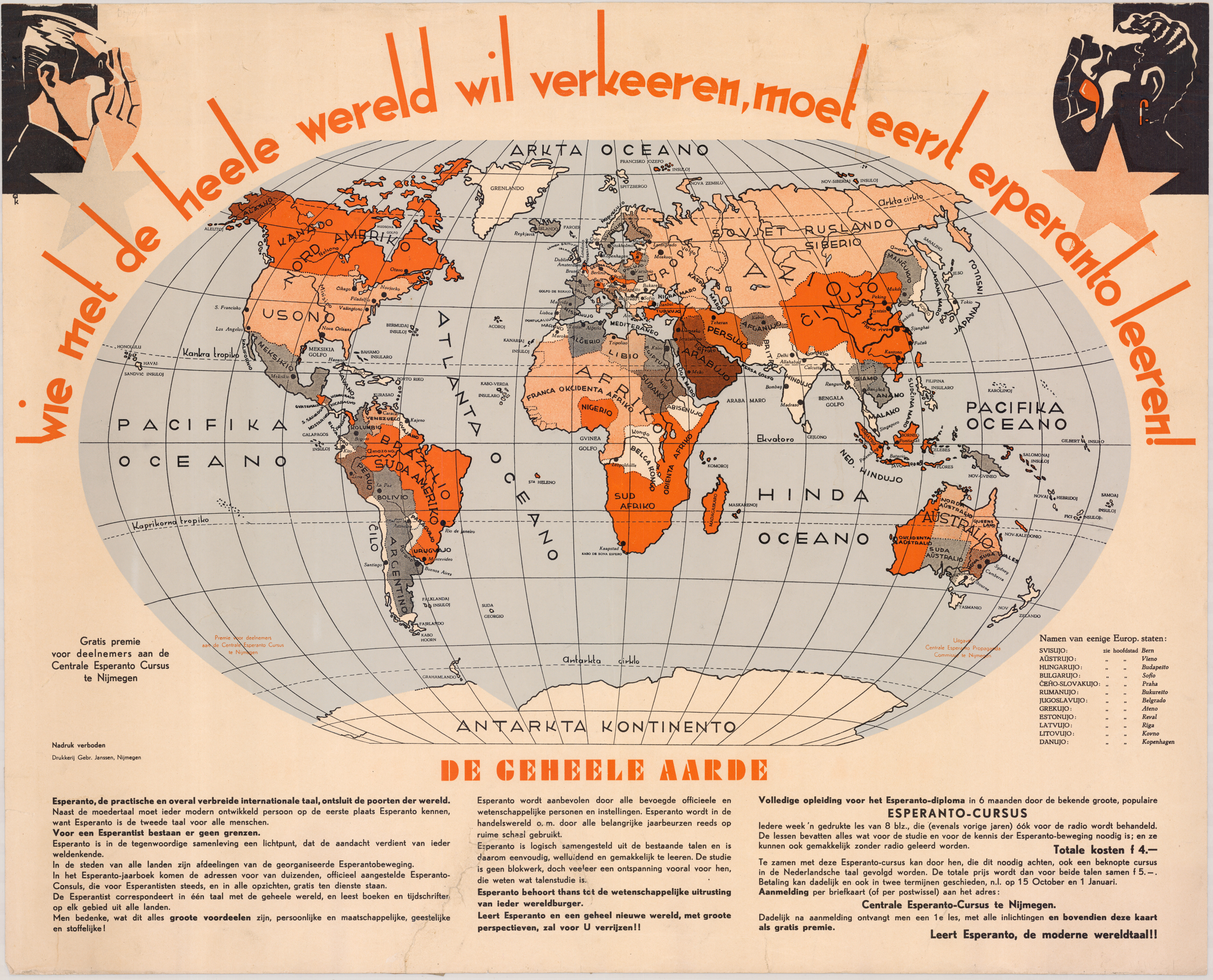“Who Wants to Change the World, Must First Learn Esperanto!”
Frances Gregor, Class of 2023, Architecture

This 1930s poster advertises a 6-month Esperanto course at the Esperanto Center in Nijmegen, Netherlands. The title and map are written in Esperanto, with the rest of the text in Dutch.
Esperanto is an artificial international auxiliary language, designed to facilitate international communication. The creator, Ludwik Leyzer Zamenhof, published his first book of Esperanto basics in 1887 under the pseudonym, Doktor Esperanto, meaning “the one who hopes.”
Zamenhof grew up a polyglot in Bialystock (then Russian Empire, now Poland), speaking many languages including Yiddish, Russian, German, French, Hebrew, Latin, and English. By 1906, Esperanto was popular throughout Europe, and Zamenhof was invited by the North American Review to write a piece introducing Esperanto to Americans. The aims of Esperanto are two-fold: a practical meld of many languages to create one that could be learned in 3 weeks by folks with a variety of native languages, and an idealistic aspiration for world peace and justice through better communication. Zamenhof writes, “It is surely self-evident that when all men speak, besides their native tongue, the same international language … then international friendship and peace will be far more assured than by the very best of treaties.” The language is still in use today.
Zamenhof repeatedly stresses that Esperanto is designed for all humans, regardless of race. He writes all humans have “admirably developed brains” and “languages to by which he can express everything in the world.” Nonetheless, the roots of Esperanto are Eurocentric and draw largely from the languages that Zamenhof spoke. This poster, published over a decade after his death, further undercuts this humanist ideal through its use of problematic caricatures. Though seemingly showing interracial communication, this poster relies on and reinforces racist tropes about Black people.
Cornell University acquired this map in 2017 as part of their Persuasive Maps collection. Though it is unlikely that Cornell students attended this course in the Netherlands, Cornell had an active student-led Esperanto community during the 1920s and 30s.
Source
“Who Wants to Change the World, Must First Learn Esperanto!,” Centrale Esperanto Propaganda Commisie te Nijmegen, 1930. Persuasive Maps: PJ Mode Collection, Division of Rare & Manuscript Collections, Cornell University Library, ID#2201.01
https://digital.library.cornell.edu/catalog/ss:19343589
Bibliography
Johns, Alfred E. “Esperanto a Living Language.” Modern Language Journal 22, no. 4 (1938): 285-290. https://www.jstor.org/stable/317859.
Okrent, Areka. “A Visit to Esperantoland: The natives want you to learn their invented language as a step toward world harmony. Who are these people?” American Scholar 75, no. 1 (2006): 93-108. https://www.jstor.org/stable/41222541.
Zamenhof, L.L. “What is Esperanto?” North American Review 184, no. 606 (1907): 15-21. https://www.jstor.org/stable/25105745.

